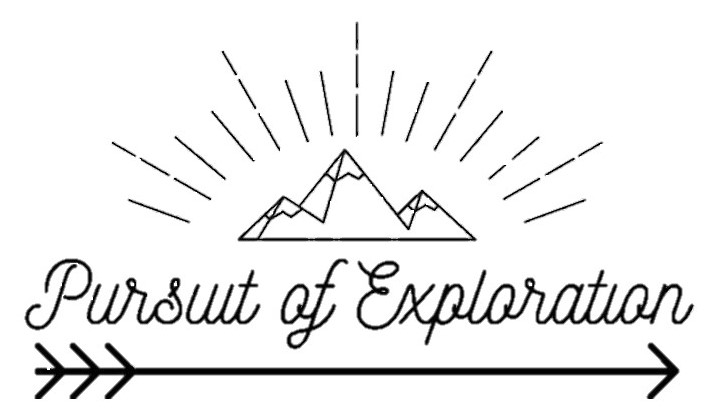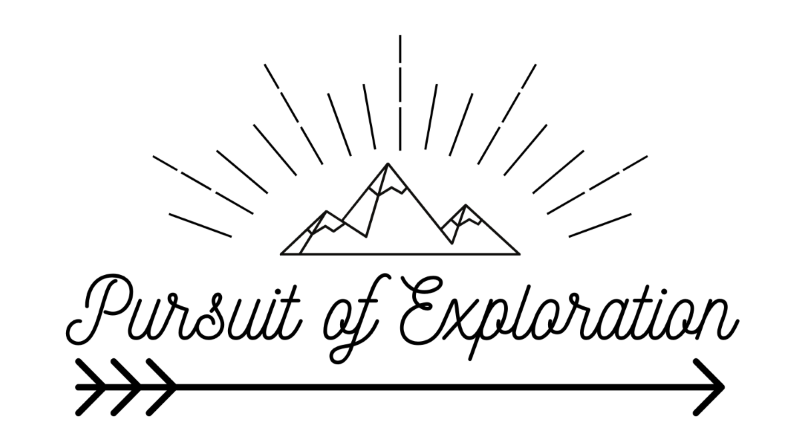It was just after 1 am when I banged on the door to the hostel. After several attempts, someone finally let me in. But my hopes of a place to stay were soon-after crushed by two simple words: “we’re full”. I couldn’t believe it! I booked a room, I swear! After a lot of double checking, it turns out I did book a room, but for the following night… I was so tired, I was ready to sleep on the nearest couch. Thankfully the man that let me in found me another hostel to stay in. He called me a cab even though it was only three blocks away. As any young traveller with limited funds, I protested that I could just walk the short distance, but he retorted that it wasn’t safe to walk outside at night, especially alone. That made me sober up to the gravity of the situation. Here I was, in a foreign country on my own, I couldn’t speak or understand the language, and I had just travelled countless hours to get here. What have I gotten myself into?

Several months prior, a flyer caught my eye as I was walking through campus on my way to class. It was from an organization named VESA: Volunteer Eco-Students Abroad (link). I was intrigued by their pairing of humanitarian and conservation projects to help communities in need. I really wanted to get involved and go on an adventure, so I signed up, and now found myself in the current situation. It would be a couple days before I met with the volunteer group so I had some time to spend in Quito, Ecuador’s capital city.
In Quito, I visited the Museo Sitia Intinian (link) to learn about the different tribes and cultures of Ecuador, I also took a cable car to the top of the Pichincha volcano which provides an unparalleled view overlooking the city. I visited many of Quito’s parks and walked down meandering streets, allowing myself to get lost in the remnants of a colonial past. Many building facades were colourful with intricate designs, and some had extravagant courtyards beyond their deceivingly simple front doors.
The Rainforest
After meeting with the volunteer group, we took a bus to Misahuallí, a town on the fringe of the Ecuadorian Amazon. I was so excited to be in a place where monkeys were the equivalent of squirrels back home, and where the landscape was green as far as the eye could see. An overabundance of vegetation seeped through every crevice and when it rained, any attempt at a coherent conversation was quickly dismissed.

Every morning, we took a motor canoe up the Napo River to a location on the river bank. We would clamber up the embankment and hike through the overbearing vegetation, attempting not to get soaked before the day started. When we arrived at the Puca Chicta community, where we volunteered every day, the kids would run over and greet us, their smiles lighting up even the dullest of days (not that there were any, everyday was awesome!). We would spend the days either helping teach English at the school or building composting toilets for community members.

After our time spent volunteering came to an end, our volunteer group went on a 4-day expedition into the rainforest. It was a 6-hour trek into the forest to reach the cabins where we would stay. There were all different kinds of insects: big spiders, beautiful butterflies, venomous conga ants, and the occasional snake. It was adventurous to say the least! The rainforest is home to so many fascinating, yet dangerous, creatures. The air is heavy with humidity and the path is muddy from the continuous rain brought by the rainy season. There are vines and roots obstructing the path, and you couldn’t simply grab onto a branch if you stumbled, unless you wanted to risk being stung by something venomous.


The cabins were in a small clearing, next to the river. We spent the days exploring various places along the river, such as the Santa Barbara community, and AmaZOOnico, a wild animal rehabilitation center. In the evening, tarantulas would climb on the exterior of the cabin walls and huge praying mantises would find their way into your bed if you forgot to fasten your mosquito net. On one of the evenings, we were visited by a shaman, who performed a cleansing ceremony. He took a sip of ayahuasca, a natural hallucinogen, as we all waited in anticipation, excitement growing with every passing minute. It wasn’t long before he took his bundle of leaves and made a series of swishes and strokes in the air to sweep away the bad energies. He turned in circles and shook his hands in a mesmerizing sequence. It was a captivating scene, illuminated only by torchlight and the plethora of stars above.
Our last night in the rainforest was spent in a large canoe, gently floating down the calm river under the starry night sky. The river was enclosed by walls of thick, impenetrable vegetation that loomed towards us from both sides of the river. All the insects and animals that surrounded us created a symphony of sounds that emanated from the daunting trees. Every unique sound intertwined to create the holistic rhythm of the rainforest. It was enigmatically peaceful.
The Mountains
After the enlightening experience of volunteering came to an end, several of us volunteers went on to explore some of Ecuador’s other facets of natural beauty. We parted ways with the rainforest and ventured to Ecuador’s Andes mountains.
From where we stood, we could see the entirety of the Quilotoa crater lake, its waters an unforgettable colour of emerald. Without much patience, we zigzagged and slid down the sandy path towards the interior of the inactive volcano. At the water’s edge we had a panorama of the crater’s rugged walls all around us, like being inside of a big rocky bowl. After spending some time admiring the waters, we began the brutal ascent… sandy hiking paths are fun when you’re sliding down but not nearly as fun when going up! We hiked along the edge of crater on a frighteningly narrow trail, where any misplacement of your feet would cause you to either roll your ankle, break your leg, or fall off the edge. Luckily, none of us were subjected to those unfortunate mishaps. You’re on your own when it comes to safety in South America.

After about halfway around, we veered off onto another trail that took as through farmers fields and rural towns. I love the experience of getting off the beaten path and diving into local perspectives. We eventually reached the top of a canyon. We were close to Chugchilán, our final destination, but it was still quite a ways and we were all exhausted. Despite being tired, adventure still boiled in my veins, so while most people were planning to catch a ride, a couple of us had enough energy to keep going. We left the rest of the group and went off on our own, with only an abstract map and a flashlight-in case we didn’t make it to Chugchilán before sunset. With a couple wrong turns and the help of locals, we finally found our way to Chugchilán, and surprisingly even beat the other group who wanted a ride back. Lesson learned: persevere in times of difficulty, it may just take you on a short cut.
We didn’t stay in Chugchilán for long. We soon found ourselves driving 4hrs to Cotopaxi. Near the end of the journey, the daunting ancient volcanic mountain, Cotopaxi, came into view. It protruded from the relatively flat plains, staking its claim on the landscape as an icon that couldn’t be missed. As we approached, there were wild horses grazing on the vast landscape, and a couple condors circling above.


As soon as we got out of the car we were greeted by a strong, cold wind. Cotopaxi means “throat-fire”, despite it being in reference to the active volcano, when I started hiking, I definitely felt that “throat-fire” as I gulped the brisk air, battling my way up the steep incline of the red and black volcanic rubble. The high altitude made everything feel so much more difficult. After what felt like forever, we finally made it to the edge of the volcano’s glacier, an elevation of 5,000m!

Among the Andes mountains are many unique cities. Otavalo and Baños are two places well-worth seeing. Otavalo has one of the largest markets in South America, where one can wander through the alleys of fruit vendors and rows of wooden stands containing all kinds of trinkets and mesmerizingly colourful fabrics. Amongst the smell of fried fish and roasted beans there are people haggling, carts being towed around, and fabrics being laid out for display. All around is organized chaos, leaving the visitor in a stupor of sensory overload. Baños on the other hand, is place for thrill-seekers. One of its most popular attractions is the Swing at the End of the World, nothing fancy, just a simple wooden plank tied to a tree as most swings are, but this swing goes over the edge of a mountain with nothing but a flimsy rope for safety! Ziplining and Bungee jumping are also sought-after activities, and like many cities nestled in the Andes, there are numerous hiking trails and volcanos to see.

The Coast
Our last days in Ecuador were spent in Puerto Lopez, a quite beach town along the coast. We had many dinners of Ceviche, a traditional dish of raw fish marinated in lemon juice served cold. It doesn’t sound like it would be good, but it’s actually quite delicious! In the evenings, people of all ages would play soccer on the beach until the sun was a red ball of fire sinking into the ocean.
We took a tour to Isla de la Plata, a dry and scarce island off the coast of Ecuador, about 1,000 km from the Galapagos Islands. We hiked up the rocks amidst the scraggly Palo Santo trees, as waves crashed onto the rocks below. We hiked along a path, passing several Blue-footed boobies, a unique bird with bright blue feet. We eventually came to a gathering of dozens of red-throated Frigate birds, their big reunion was a chorus of squawking and flying feathers as they kept encircling us, constantly leaving and returning to their nests. After exploring the island, we took to the water, diving into the restless ocean with snorkeling gear. I was amazed at the abundance of different coloured fish all around me and the sea turtles that slowly swam by, just beyond arm’s reach. I’m always amazed at how there can be so much sea life beneath the endlessly flat view of the ocean waters above.


As I walked along the white sands of Playa de los Frailes, a beach near Puerto Lopez, I thought back to when I first arrived in Ecuador and how misplaced I felt. Now I couldn’t bare the thought of leaving. Ecuador is a great place to start for those who want to travel South America; the people are welcoming and this country has something for everyone. Ecuador is the ultimate place for nature enthusiasts who want to experience all kinds of different landscapes. The rainforest, the mountains, the coast, I couldn’t make up my mind for which experience was the best, I cherish them all. As I looked out to the clear, crystal blue waters of the ocean, I promised that I would be back.



